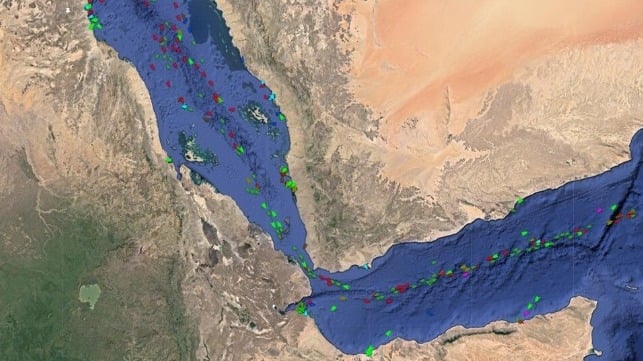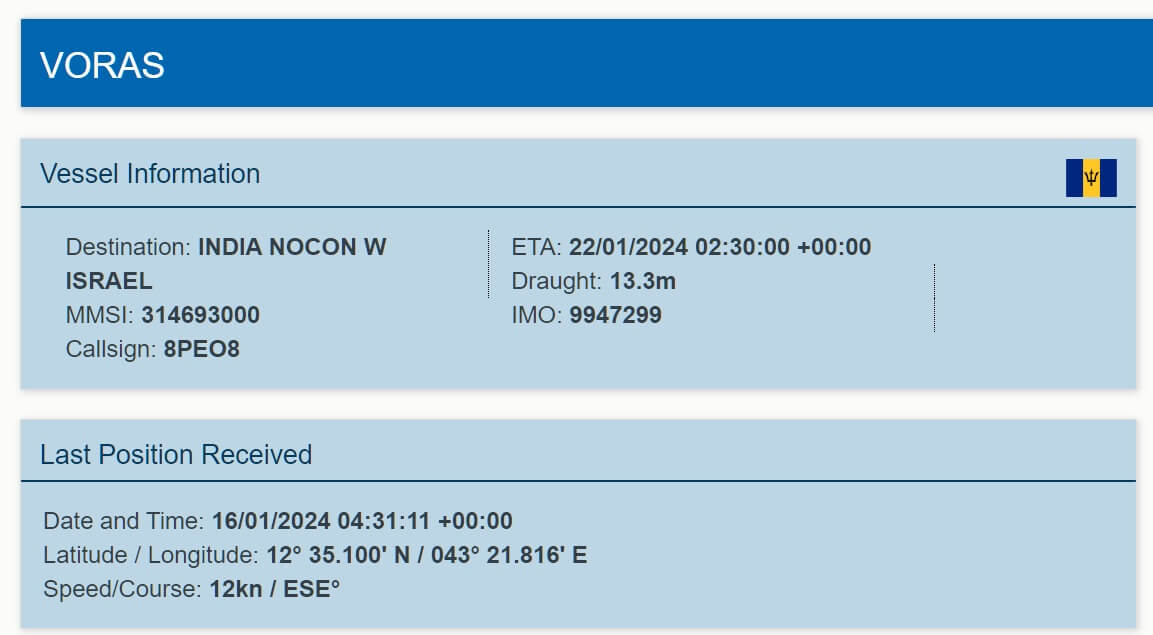Despite Warnings, Plenty of Vessels Continue to Use Red Sea Route

Recent attacks on shipping in the Red Sea have made a big dent in traffic on the busy waterway, but it is by no means vacant - even after abundant warnings from government coalitions, industry groups and maritime security consultancies to avoid the area.
Yemen's Houthi rebels have been attacking merchant ships with drones and missiles since November, and have launched at least 29 strikes to date. The latest occurred Monday morning, when a Houthi ballistic missile struck an American-owned bulker in the Gulf of Aden.
U.S. and British forces have struck back at Houthi positions on land, with limited success, and the militant group still possesses the ability to conduct further strikes. The U.S. Maritime Administration has warned U.S.-flagged or U.S.-owned vessels to stay out of the waters south of the Saudi border or west of Aden, and the Combined Maritime Forces - the international maritime-security coalition based in Bahrain - has advised all shipping to "stay well away" from Bab el-Mandeb.
Nonetheless, merchant traffic continues at a steady pace on the Red Sea-Suez route, often without turning off AIS. Bulker, freighter and tanker traffic continues in relative abundance, though at a lower pace than usual and without some big names. Container ships have either fully vacated the space or disappeared from AIS tracking, with the exception of a handful of independent feeder ships.
Some of the vessels in the area have adopted new messaging. Last week, Houthi leader Mohammed Ali Al-Houthi said that ships wishing to pass by Yemen should renounce Israel in their AIS broadcast signal. “Every ship that goes through the Red Sea, Bab El-Mandeb, or the Arabian Sea should broadcast the words, ‘we have no relationship with Israel,'" he said.
More than a few ships have taken up this message while transiting past Yemen, judging by AIS data. On Tuesday morning (local time), at least four were broadcasting some variation of "no contact with Israel" as their AIS destination. These included the bulkers SSI Glorious (UAE-managed), Voras (UK-managed), AC Renhe and Pocahontas (both Chinese-managed).

Vessel status courtesy Pole Star
Vessel traffic in the area is almost certainly more abundant than it appears based on satellite AIS reception alone. These receivers cannot "see" vessels that turn off AIS, and the Red Sea is one of a handful of regions where turning off AIS is an accepted, legitimate practice.
Ship-tracking experts have additional ways to assess traffic volume, beyond what appears on AIS databases. Corey Ranslem, CEO of maritime intelligence firm Dryad Global, told the New York Times that vessel traffic on the Red Sea route is now about 50-60 percent of what it once was.
Risk versus reward
Shipowners and insurers will make a business assessment of the risk and reward of using the route, including the degree of the hazard to the vessel. Since the start of the Yemeni civil war 10 years ago, no steel-hulled merchant ship has been sunk by a Houthi attack, though several have been damaged. Likewise, the Houthis' Iranian sponsors have not sunk a merchant ship or caused a total loss in many years, though they have attacked vessels using similar tactics.
"We haven’t seen a [Houthi] missile strike or a drone strike cause catastrophic, structural failure that would lead to the sinking of a ship,” Ranslem told the Times.
No seafarers have been killed during the current Red Sea unrest, either, but fatalities have occurred in the past with the same munitions. In 2021, an Iranian drone hit the tanker Mercer Street off Oman, killing a British guard and a Romanian crewmember.
